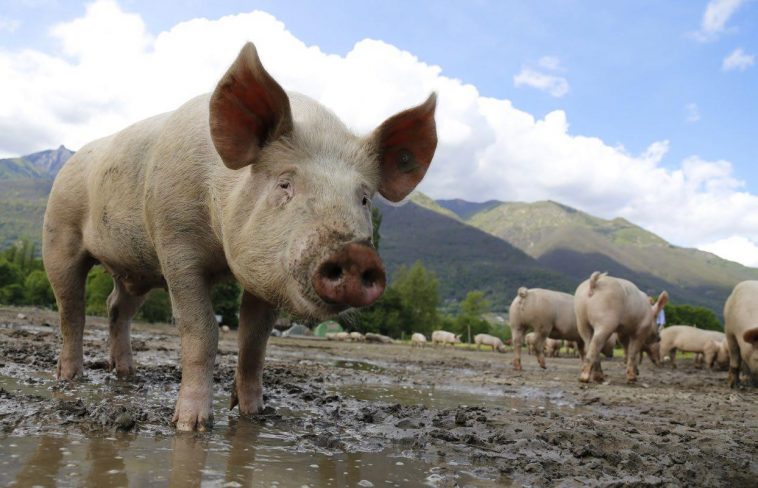Pig feed
Good, high-quality feed is essential for pig production. Proper feed does not only lead to healthier pigs, but also to more profit. Pig feed can drastically impact on the profitability of a pig farm due to the fact that the price of feed is linked to the market price of grain. If grain becomes more expensive, so does feed.
This is why those farmers who can afford to do so, usually plant their own grain to make their own feed. Pig feed influences the growth and reproduction rate of your piggery. The quality of feed will also determine how much of it the animal can effectively absorb, and how much simply goes to waste. Not all pigs can eat the same feed. The feeding requirements of pigs in the different production phases differ, therefore they need different feed mixtures.
There are generally four categories that pigs can be divided into according to their feeding requirements.
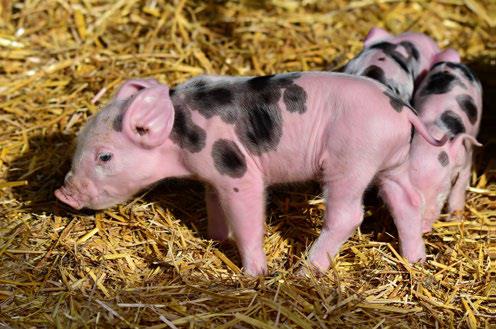
Boars: Boars need to be kept in good condition for breeding purposes. They need to be fed a mixture that is high in fibre and protein, usually containing bran rather than grain.
Pregnant sows: These sows can be fed with the same feed as the boars, seeing that their dietary requirements are similar.
Sows with piglets: The mixture is usually referred to as a lactating sow mixture. A good quality feed will prevent her from losing too much weight while feeding her piglets.
Young pigs: Young pigs from the age of three to ten weeks also need their own mixture. The final mixture can be fed to growing pigs up to the point where they weigh between 60 and 90 kg.
Pig feed can include the following products:
- Grains such as maize, sorghum, wheat, barley, or oats
- Grain by-products such as wheat bran, hominy chop or maize bran
- Plant proteins like soya oilcake or sunflower oilcake
- Animal proteins like fishmeal or bloodmeal
Other elements that should be added to pig feed include feed grade lime, salt, calcium phosphate and a mineral and vitamin feed additive. New-born piglets are very sensitive to cold, draughts, wet bedding and floors, as well as sudden changes in temperature.
Therefore ensure that everything possible is done to prevent piglets from being exposed to these conditions. Feed the piglets small quantities every 2 to 3 hours. Start by giving 50 ml each time they are fed, so that each piglet takes in 350 ml per day. Gradually increase the quantity to about 100 ml so that each piglet gets 750 ml at three weeks of age.
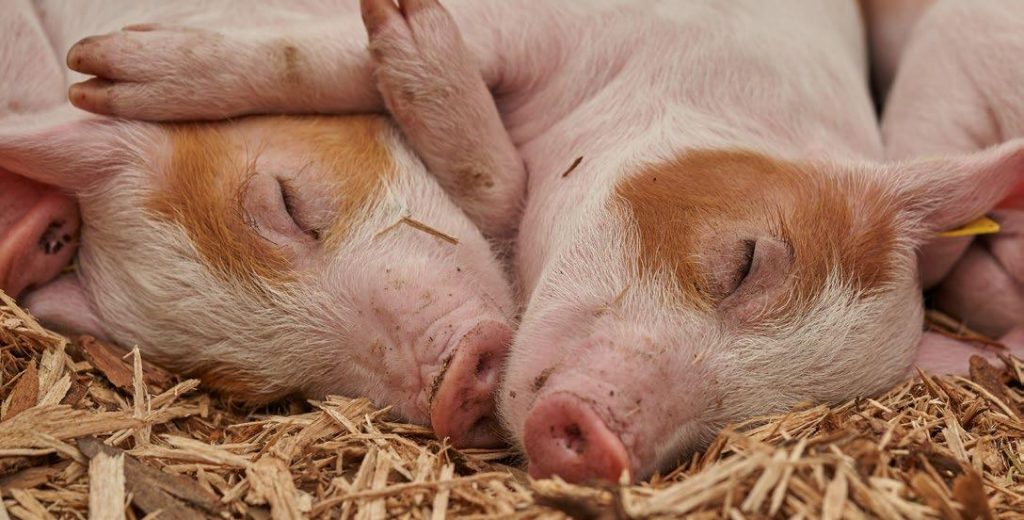
Management of the specific treatment of piglets
Umbilical cord: Disinfect the umbilical cord after birth with an iodine solution or any other suitable disinfectant to prevent bacterial infection.
Tusk clipping: Piglets have very sharp temporary tusks (or teeth) at birth, which must be clipped to prevent injuries to the teats of the sows during suckling. Use a tusk clipper and do not clip the teeth too close to the gums.
Iron injections: The milk of the sow does not provide enough iron to piglets that are reared on concrete floors. Piglets must therefore be injected with iron when they are three to seven days old.
Water and feed: Clean, fresh water placed at the back of the pen where the piglets will learn to defacate is very important. The sooner they start to drink water the better.
Sow management: Good management is necessary to produce a maximum number of pigs that can be sold per sow in one year’s time at a maximum profit for the farmer.
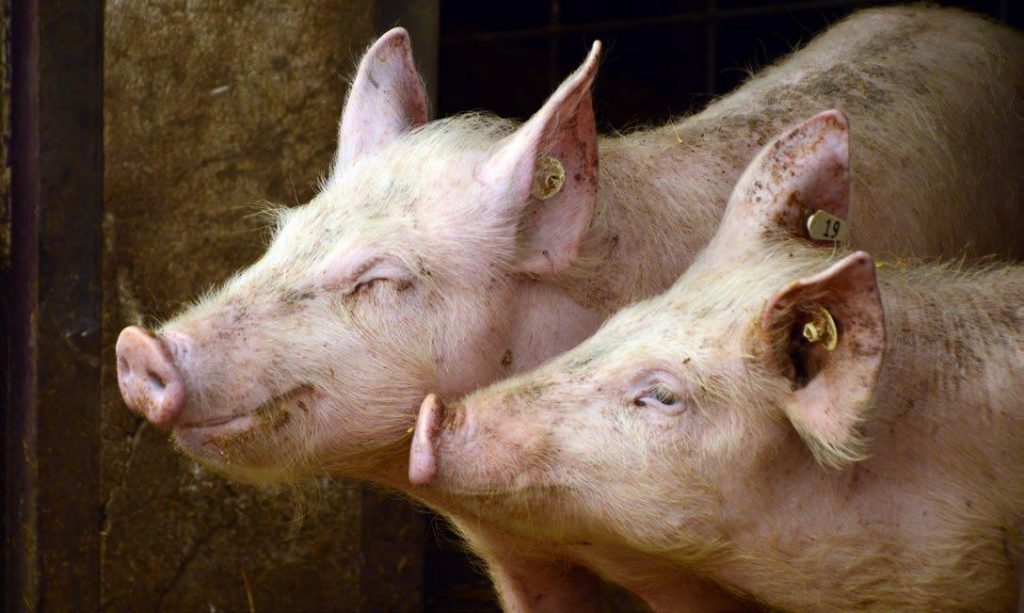
Preventing and treating diseases in piggeries
There are many causes of disease in animals. Knowledge of causes of disease, and of how animals can get a disease, helps us to know how to prevent disease and to treat sick animals. Below are some potential causes of diseases.
Parasites
Most parasites are easy to see, although some mites and the early stages of worms can only be seen under a microscope.
External parasites: Flies, lice, fleas, ticks and mites can cause serious diseases in animals. Some live on the animals for their entire lives, others only spend part of their lives there, while others only visit to feed. They can result in irritation and skin damage in animals.
Internal parasites: Internal parasites (including roundworms, flukes and tapeworms) can cause serious diseases and loss of production in animals. They usually live in the stomach and intestines, but also in other parts of the body such as the lungs and liver.
Microbes
Microbes (germs) are usually too small to be seen with the naked eye, and only a microscope will enable you to see what a microbe looks like. Just because you do not see microbes with your naked eye, does not mean that they cannot cause disease in your animals.
Many different microbes can cause disease in animals, but there are four main types:
Viruses are the smallest of all microbes. They must live inside cells in order to survive and breed. Viruses cause about 60% of disease outbreaks in animals and humans. Examples of diseases in animals caused by viruses are rabies, Newcastle disease and three-day stiffsickness.
It is difficult to treat diseases caused by viruses because the viruses live inside animal cells. Bacteria can live in animals and in the environment. Not all bacteria cause disease. People and animals have bacteria living on and in them that do not cause disease. Examples of diseases in animals caused by bacteria are anthrax, blackquarter and tuberculosis.
Bacteria can infect wounds, and that is why wounds should be treated. Fungi occur widespread in the environment (soil, air and water) and include mushrooms and mould on stale food.
Fungi need to grow on organic material in order to feed, and this can include animals and people. An example of a fungal disease in animals is ringworm.
Some protozoa can live outside cells, especially the type that causes trichomonosis, a venereal disease in cattle.
Others need to live inside cells, and include those causing coccidiosis, redwater, heartwater and gallsickness.
Animals can be poisoned by chemicals (such as insecticides and dips), poisonous plants and fungal toxins. They can also be bitten by snakes, scorpions and spiders.
Dietary problems: Lack of enough food or lack of a particular part of the food (such as phosphorus) can also cause disease. Malnourished animals may develop other diseases because they are weak.
Metabolic diseases: Metabolic diseases are an upset in the normal functioning of the animal (that is not caused by infection, poisoning or feed deficiencies) and usually result from intensive animal production.
Congenital diseases: In some cases, animals can be born with a disease. Some of these may be inherited (passed on from the parents). This is rare, and inherited diseases are usually seen at birth.
Environmental problems, such as pollution, contribute to some diseases, for example, animals may eat plastic bags or wires and this can harm the animal’s health.
Cancer occurs when some of the cells in the body grow in a way that is different from normal. Illness occurs because of the pressure of the growth on other parts of the body and the fact that affected parts of the body cannot function normally.
Allergies: Some diseases are caused by allergies, which is when the body’s own immune system attacks part of the body.
Degenerative disease: Some diseases are caused by parts of the body breaking down, particularly as an animal grows older.
Breeding practices and boar management
In the case of a small-scale farm with 20 or fewer breeding sows, the following selection and breeding programme can be used:
- Always buy good (above average) purebred boars.
- Buy boars from prominent breeds used in your country.
- When buying gilts (young female pigs) for the first time, make sure that they come from a breeder with good pigs and who keeps accurate records.
- When at a later stage you want to select your own gilts for breeding, it is important to apply strict selection measures and to keep accurate records of growth and feed conversion.
- Always buy gilts from the same breeder (farm) and make sure that a breeding plan (policy) is used.
Breeding pigs
Buy boars at least four or five weeks before they are used for the first time. This will allow you time to keep them in quarantine and the boars to adapt to the new environment.
Important considerations:
- Select boars that are free from defects.
- The boar must be at least 8 months old.
- The boar and the sow should preferably be about the same size.
- The boar should work (serve the sow) in his own pen or in a pen that is familiar to him.
- The floor of the pen must not be slippery and all obstructions must be removed.
- A small sow and not a gilt should be used to train the boar.
Select breeding gilts from sows that produce large litters with above average growth rate, and carcasses with a low fat content.
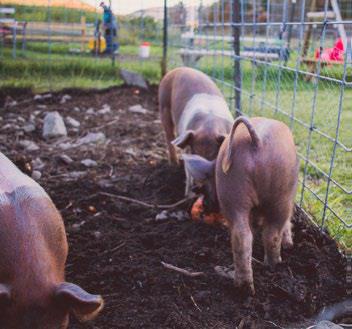
Proper housing is important
As the story teaches us, pig houses of straw or twigs do not suffice. Pigs at different stages of growth need different environments and temperatures. If they are to produce and grow to their maximum potential, piglets need special protection against very low temperatures. Growing and reproducing pigs must be protected against high temperatures. The houses must therefore be built in such a way that the pigs are protected against extreme temperatures and other bad weather conditions such as cold winds and continuous rain.
Manure management
An important operation on any pig farm is proper waste management. The manure produced in the piggery can cause many problems if not managed effectively. If sound waste management principles are followed, it can increase the productivity and profitability of your pig farm.
During the structural planning of a new piggery, or the expansion of an existing structure, careful consideration must be given to the specific waste management system that will be implemented. Farmers generally tend to dispose of the waste in a liquid or semi-liquid form, known as slurry.
There are two options for removing the waste from the pens easily and effectively: The housing can be constructed with a slatted floor that covers a storage lagoon into which all the waste can flow. Alternatively, the housing can be constructed with sloping floors that lead to waste channels.
These channels flow into a waste storage pit away from the housing. Regardless of the design, the principle remains that the waste should be drained away from the pigs to prevent infectious disease from spreading in the piggery.

